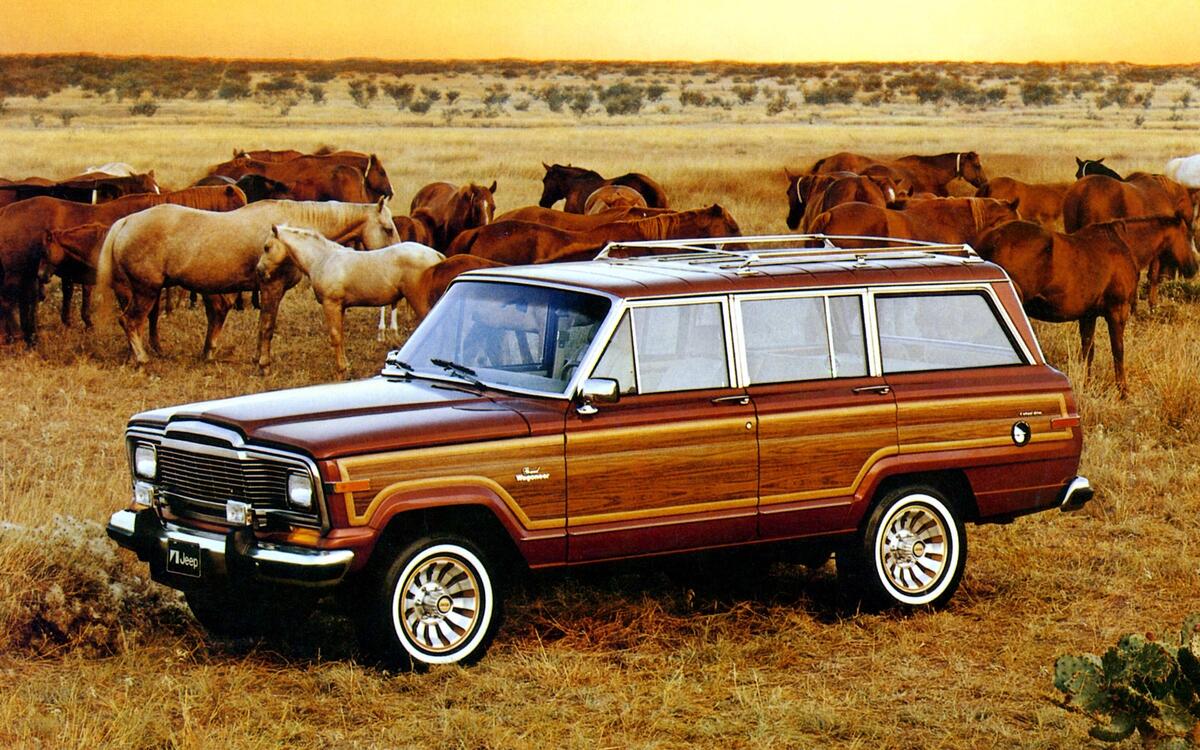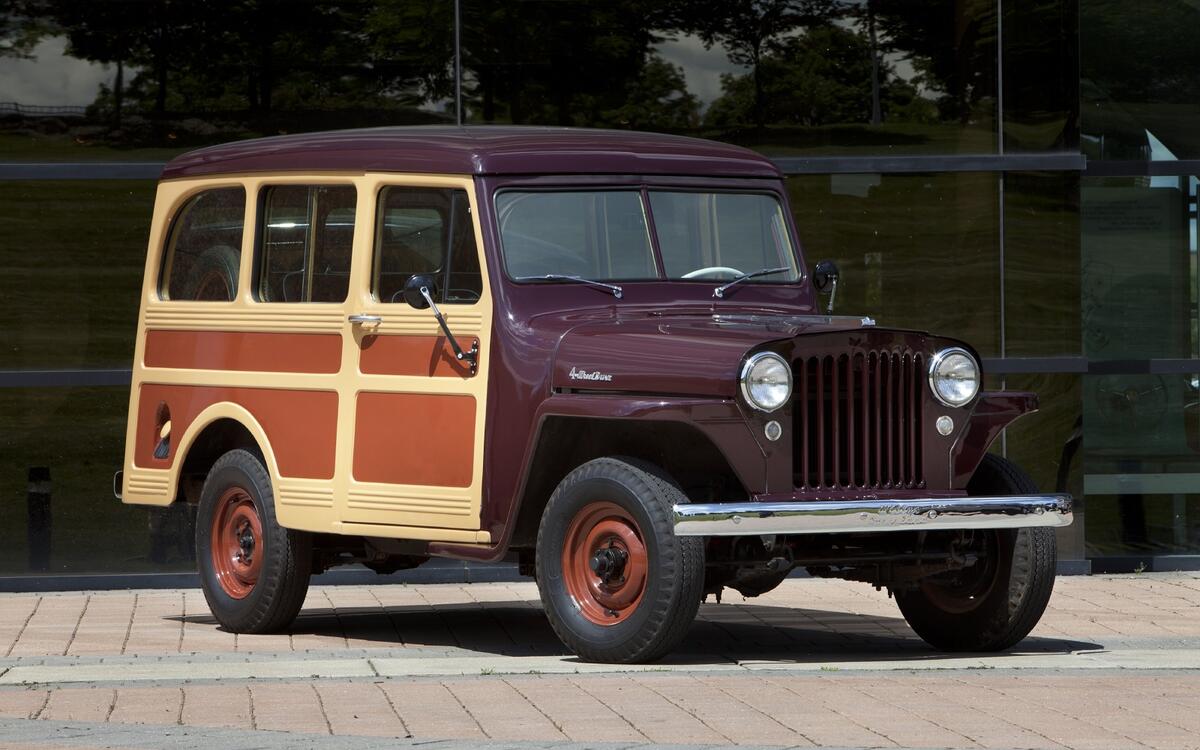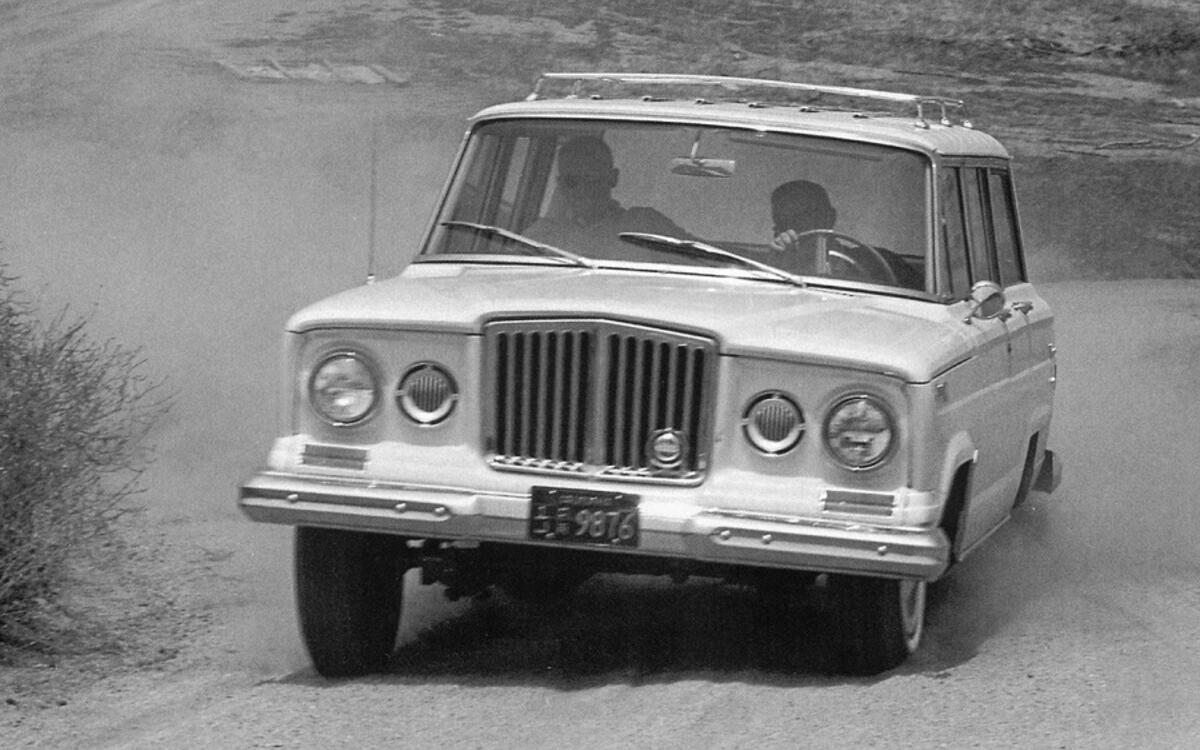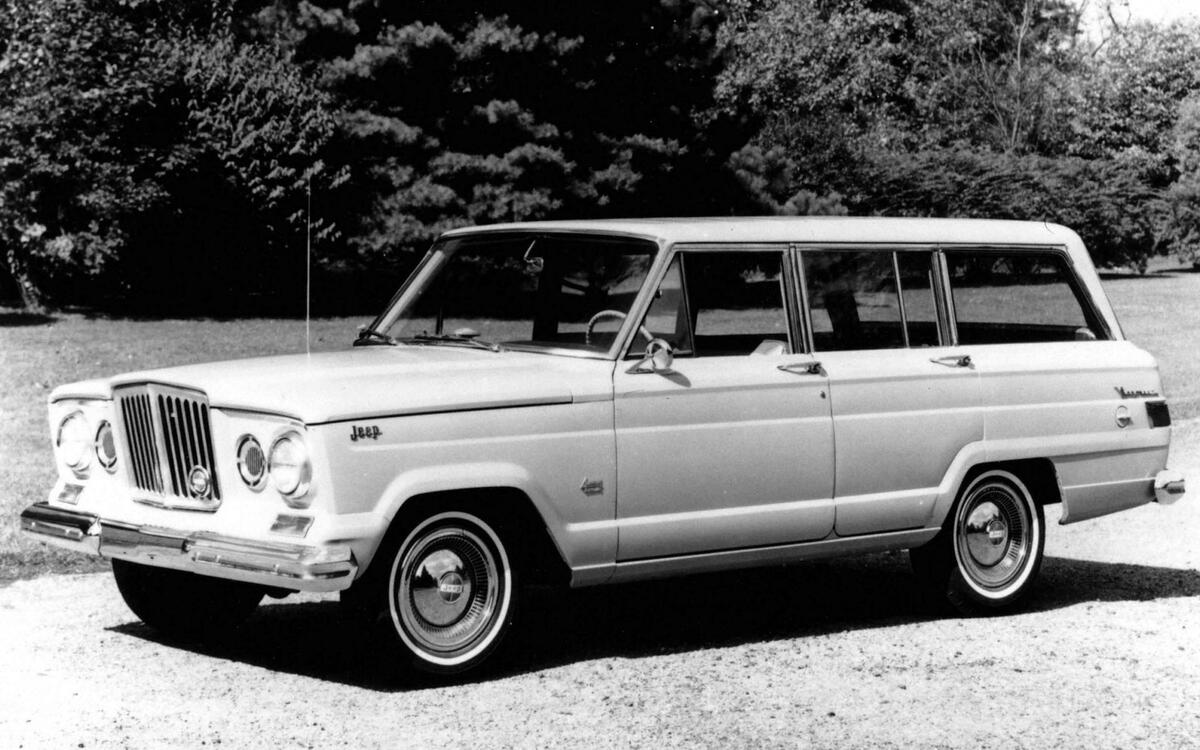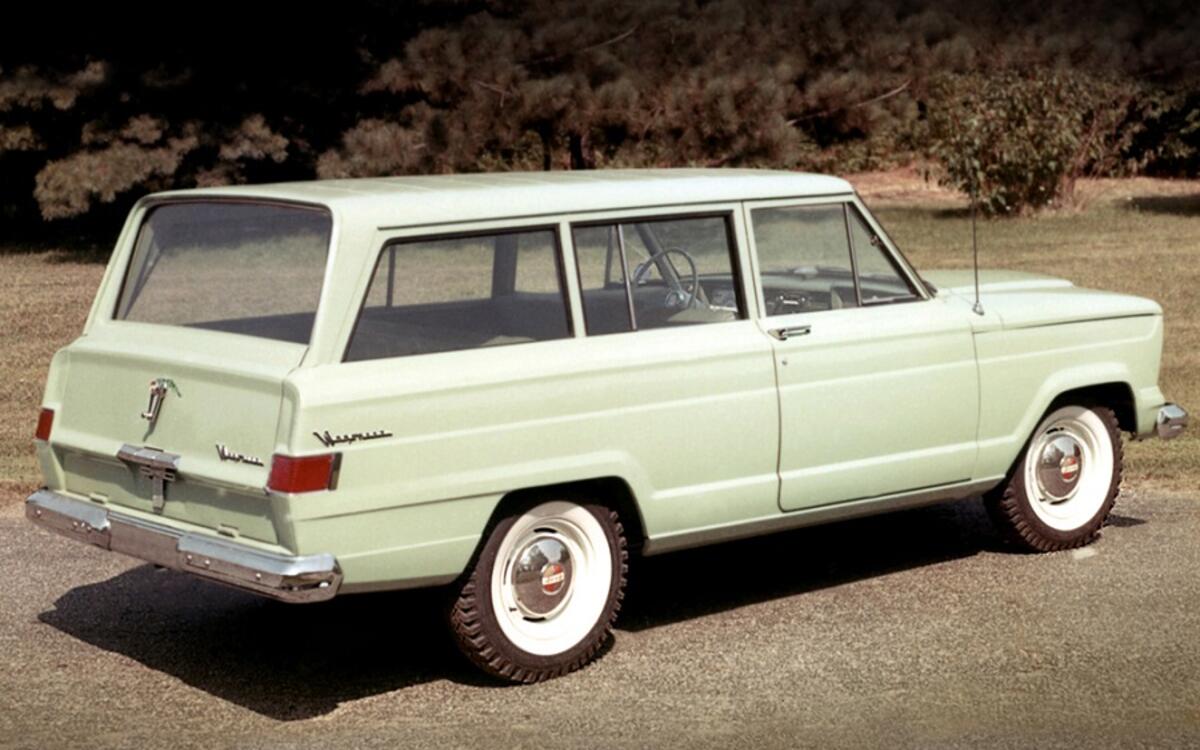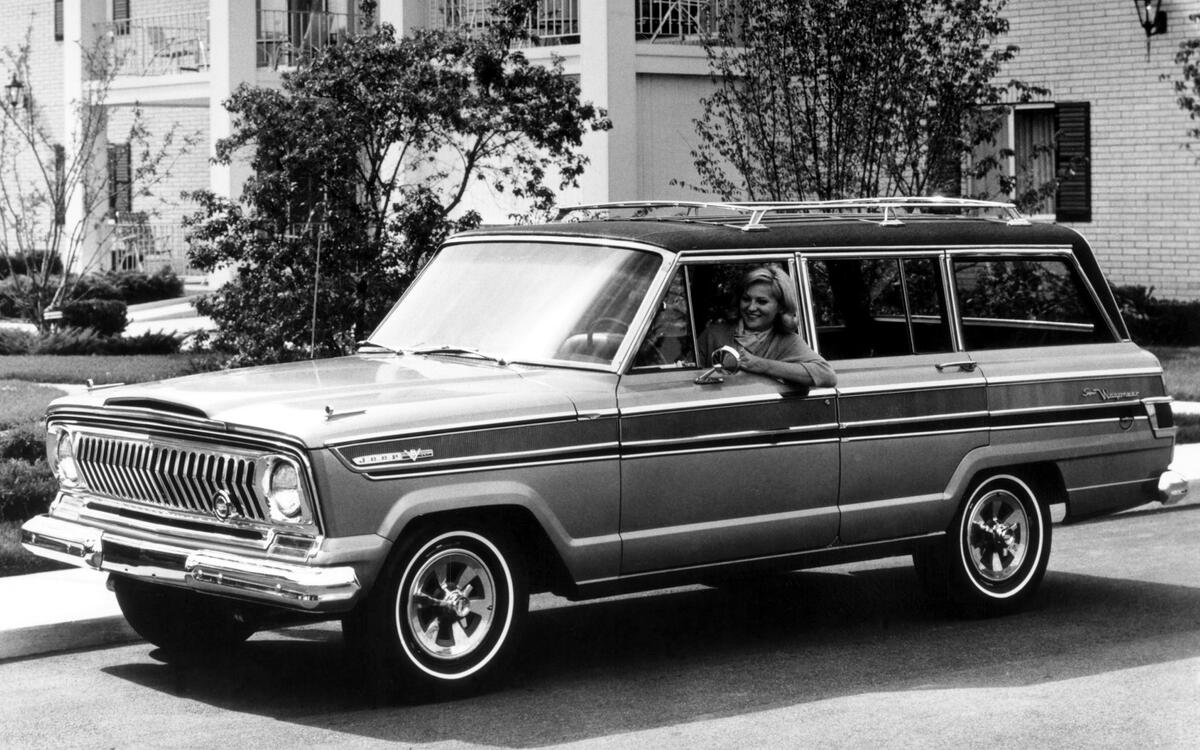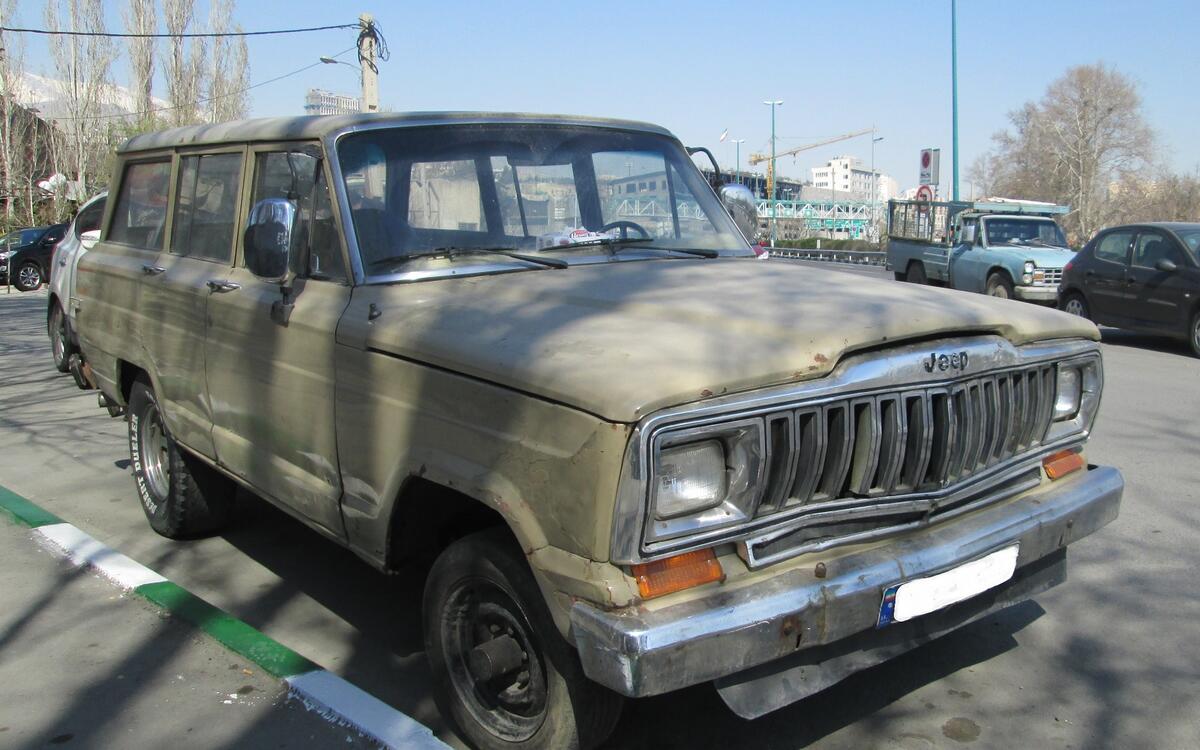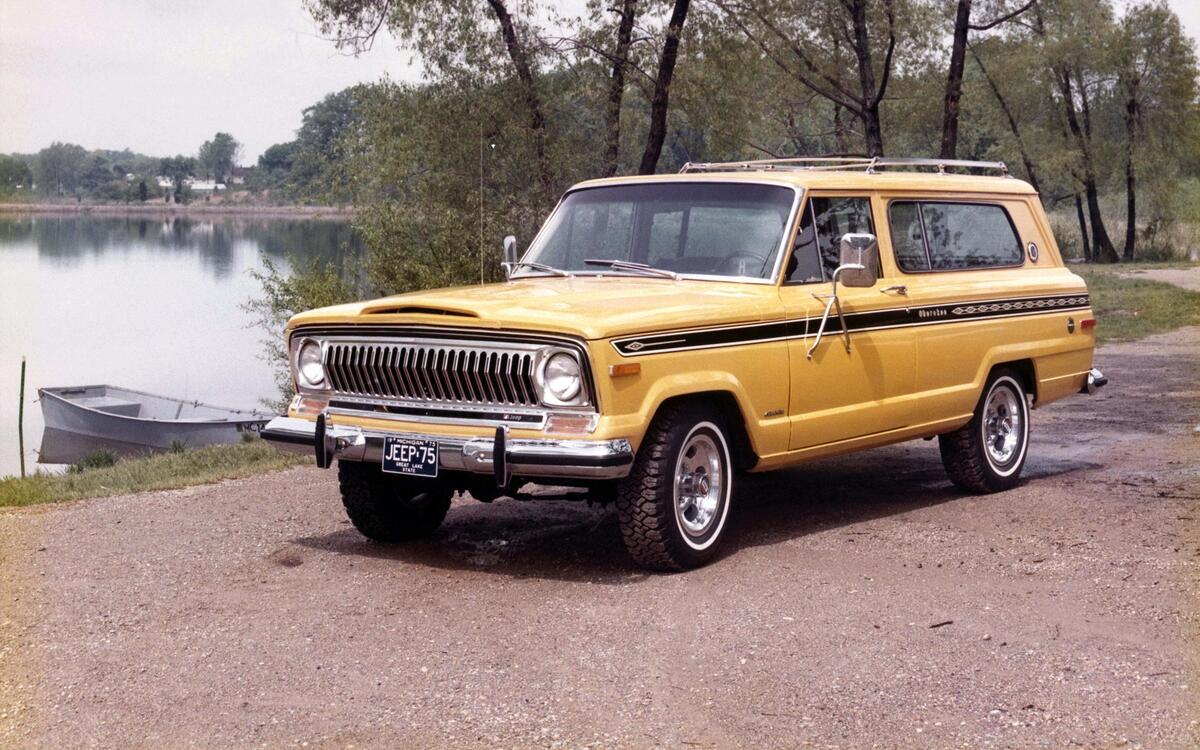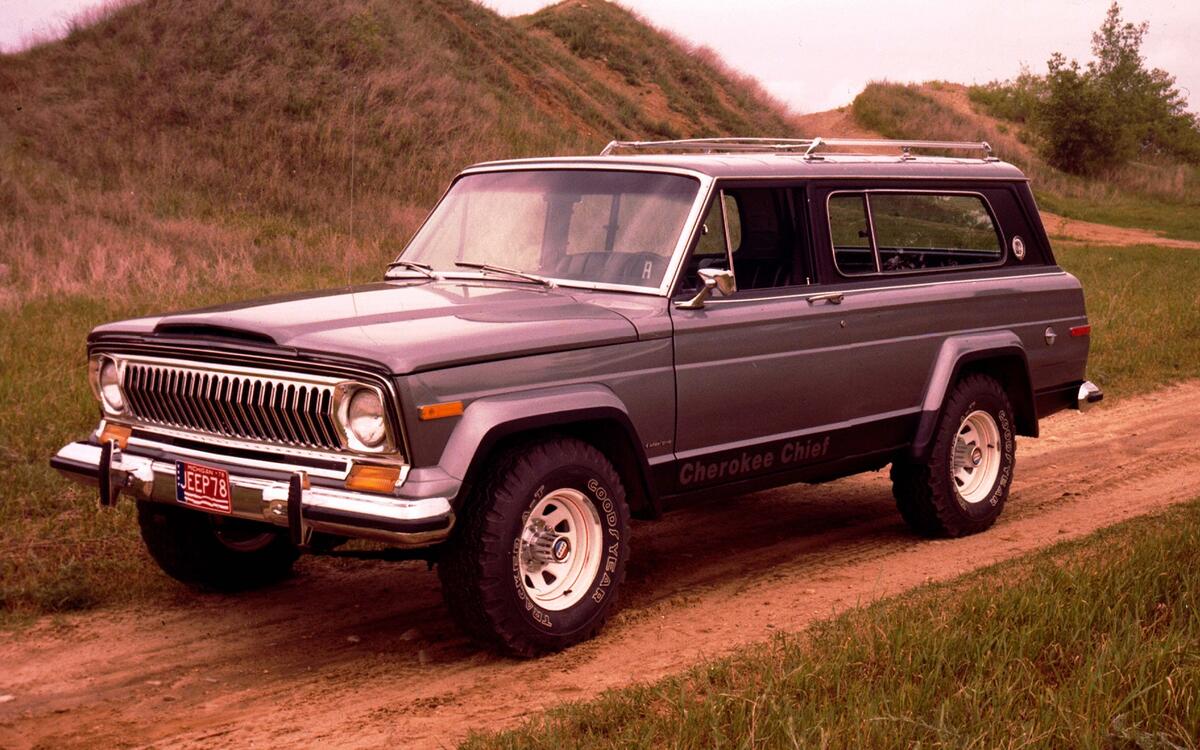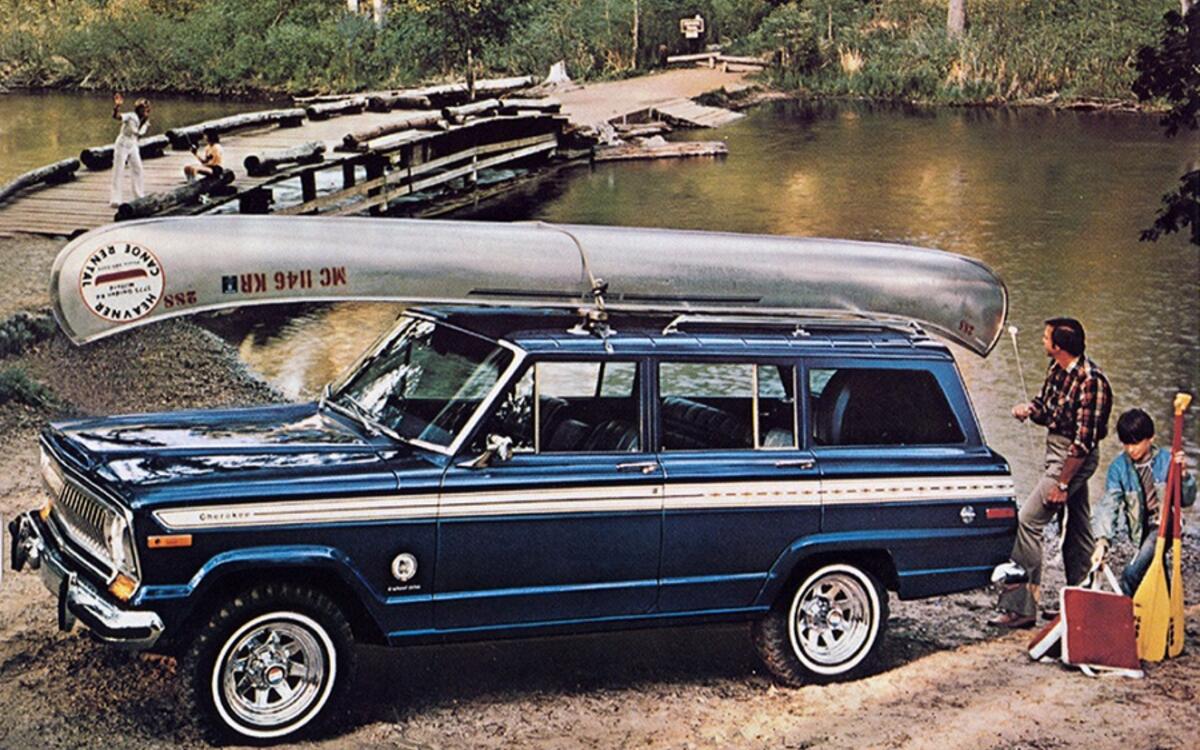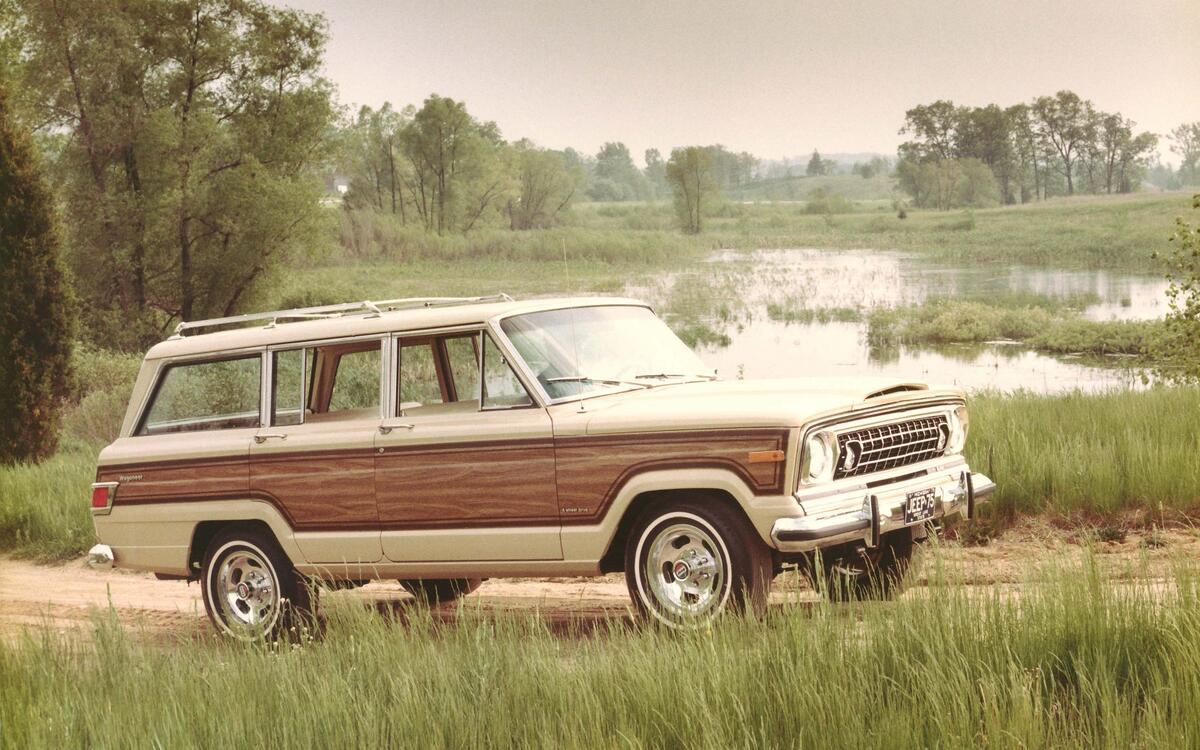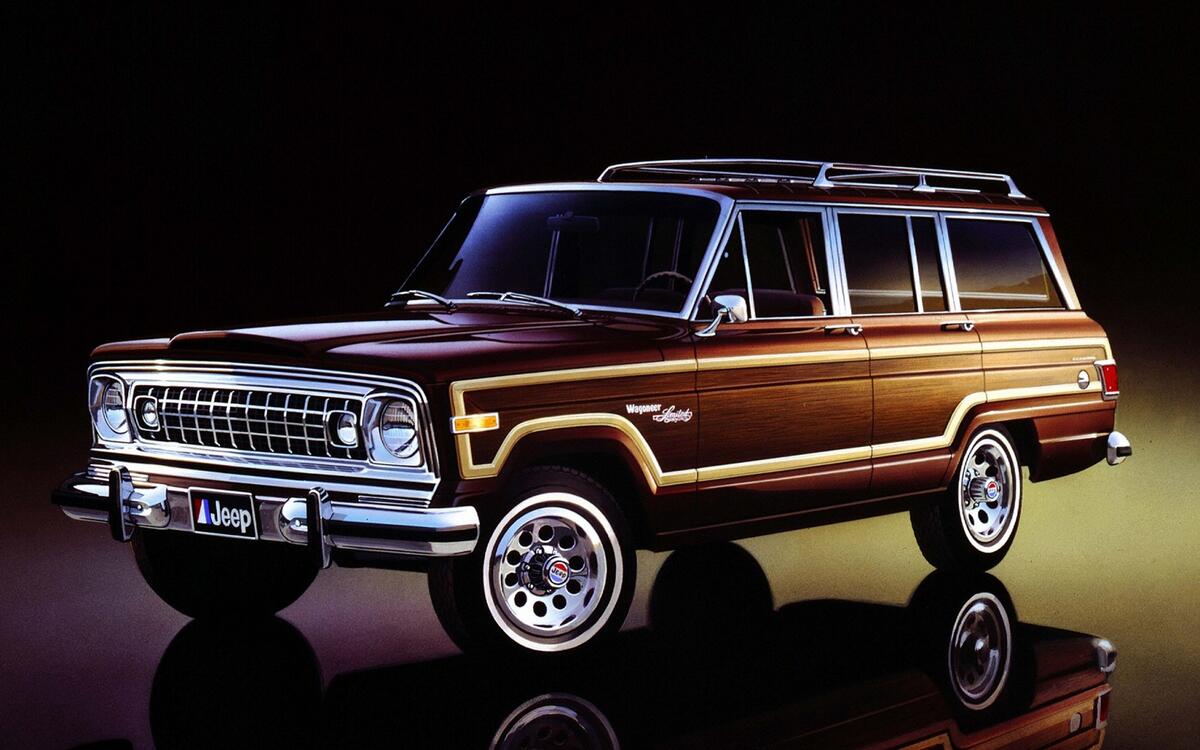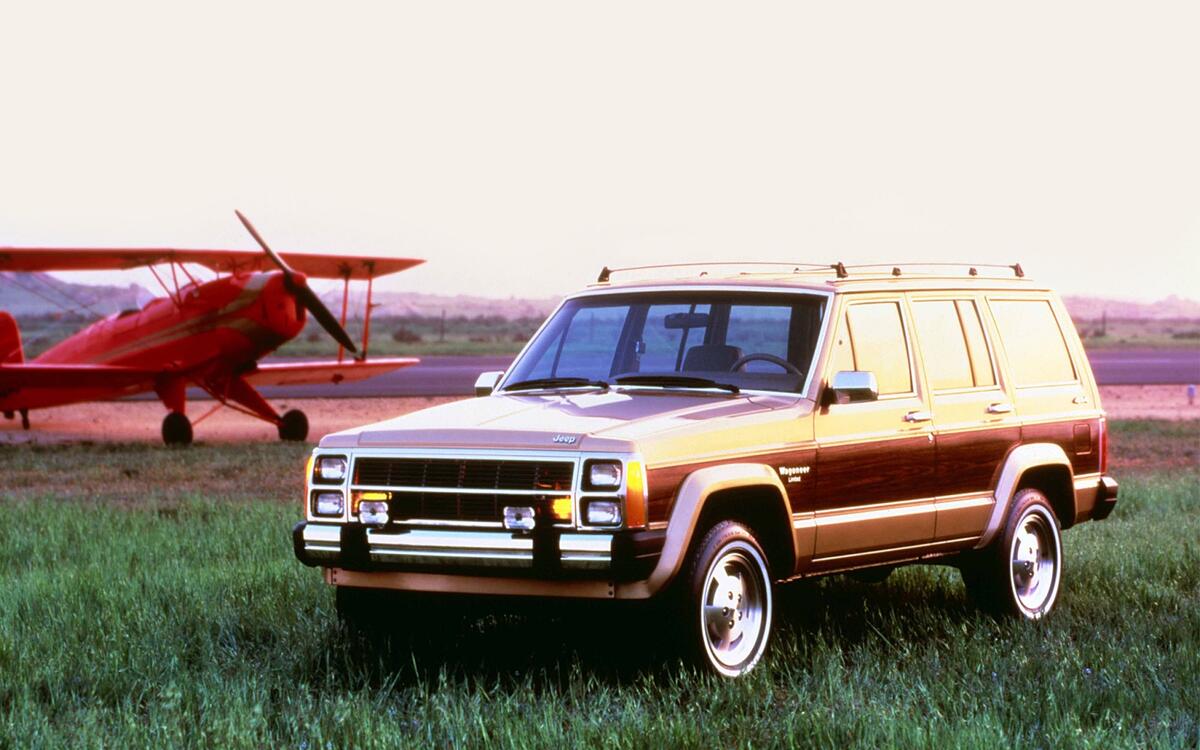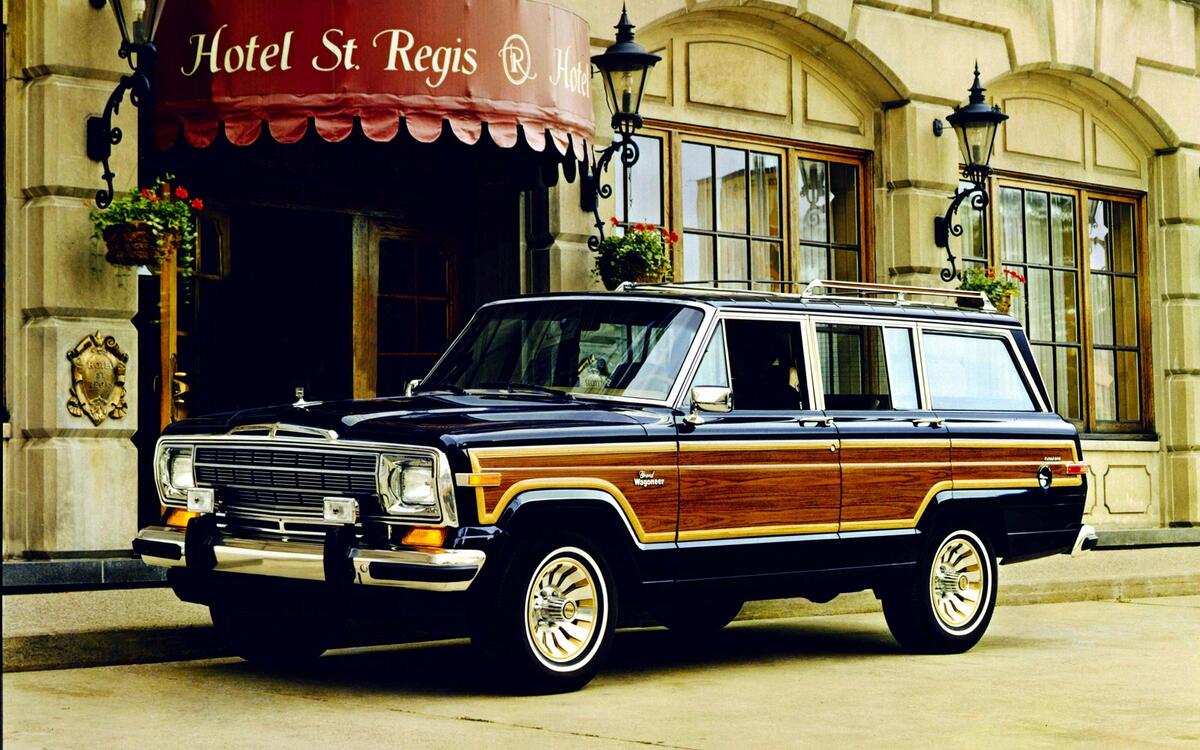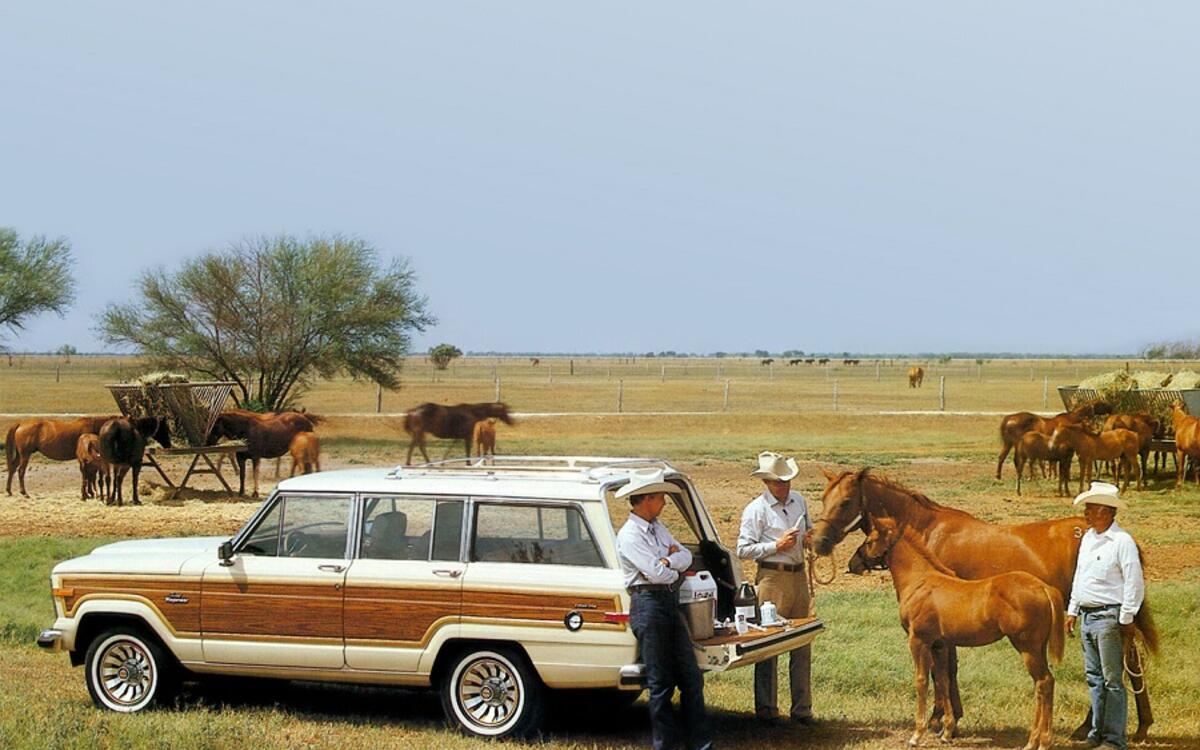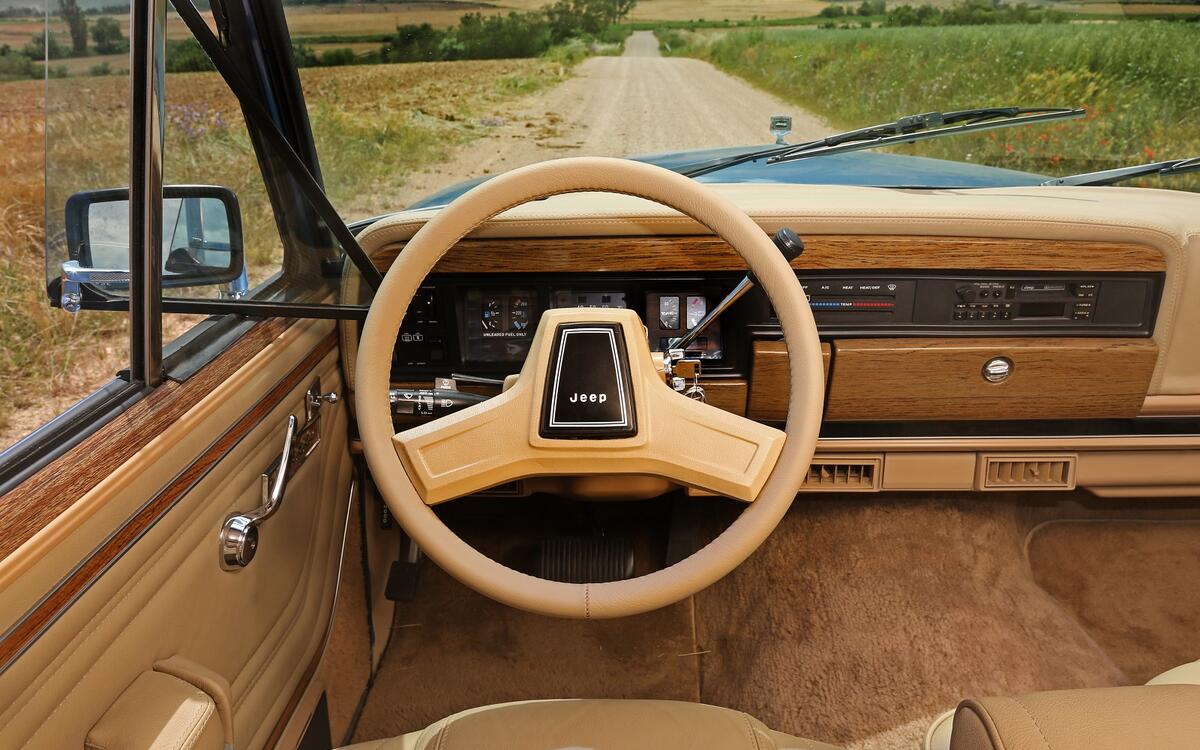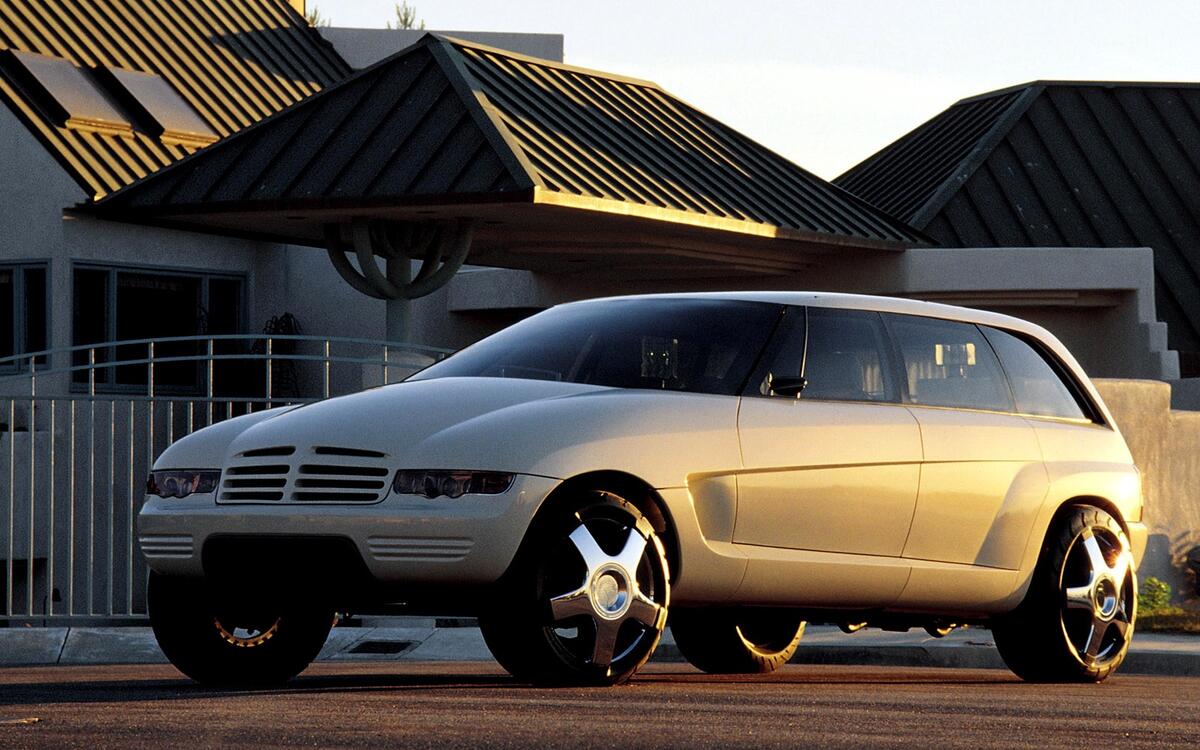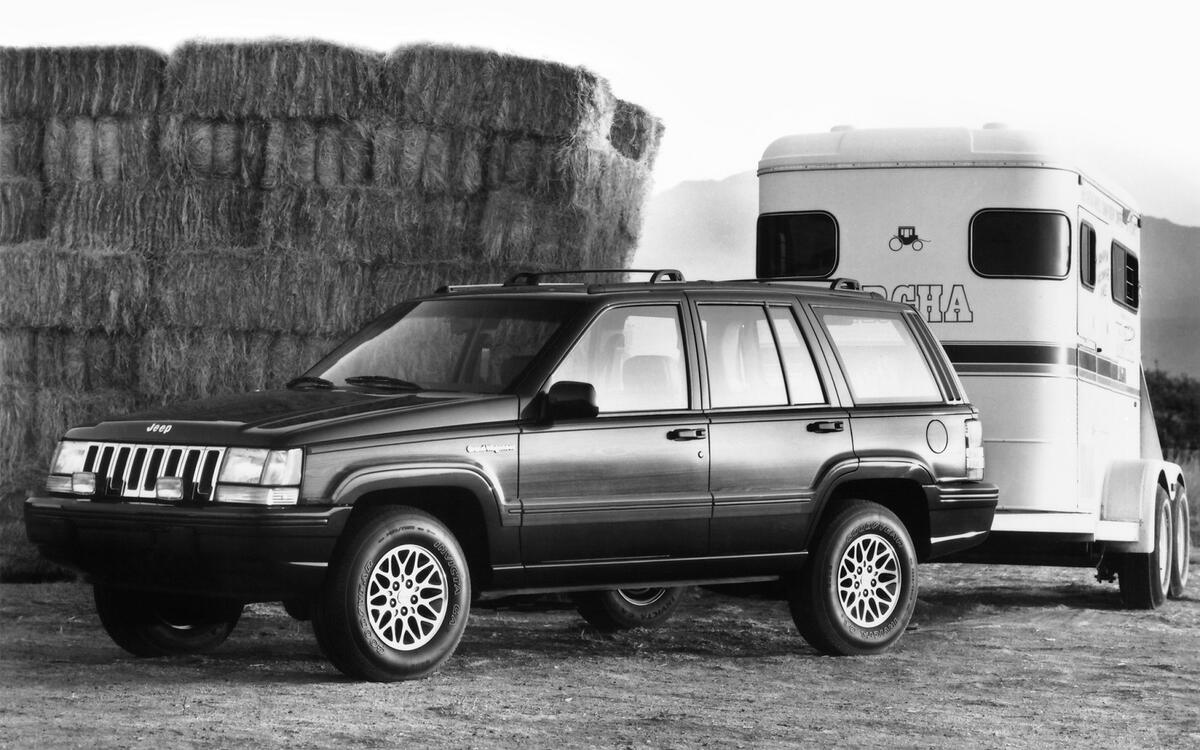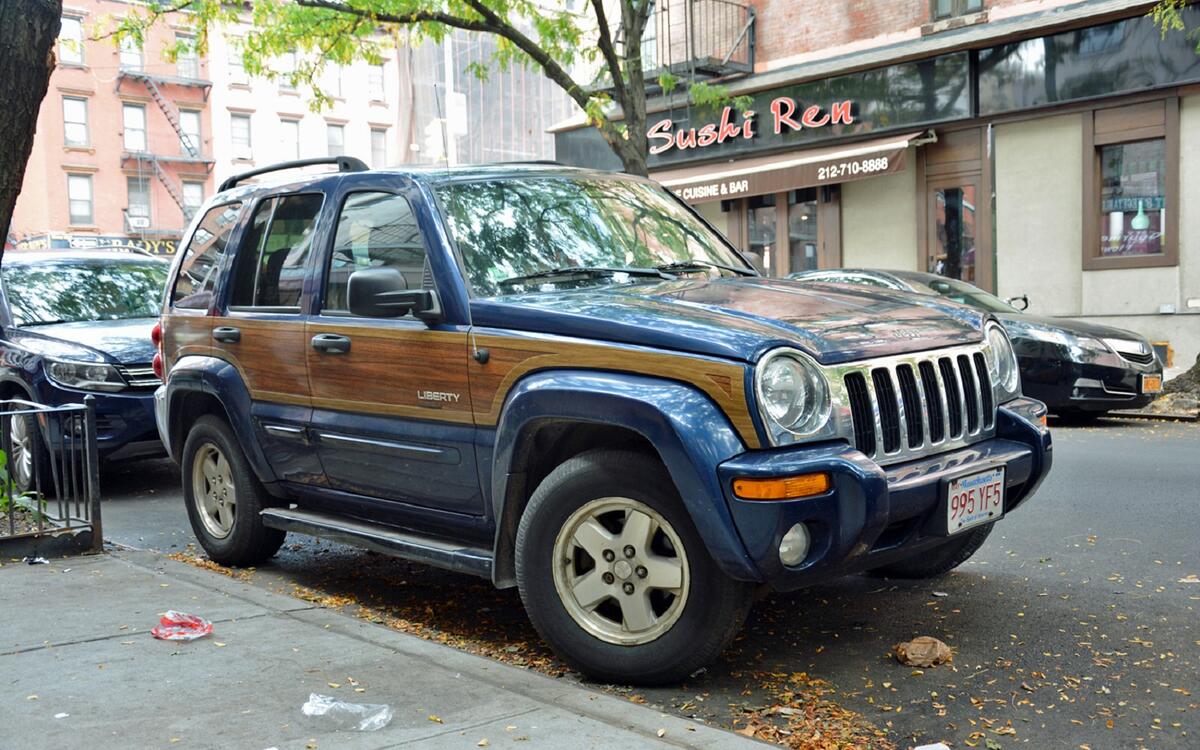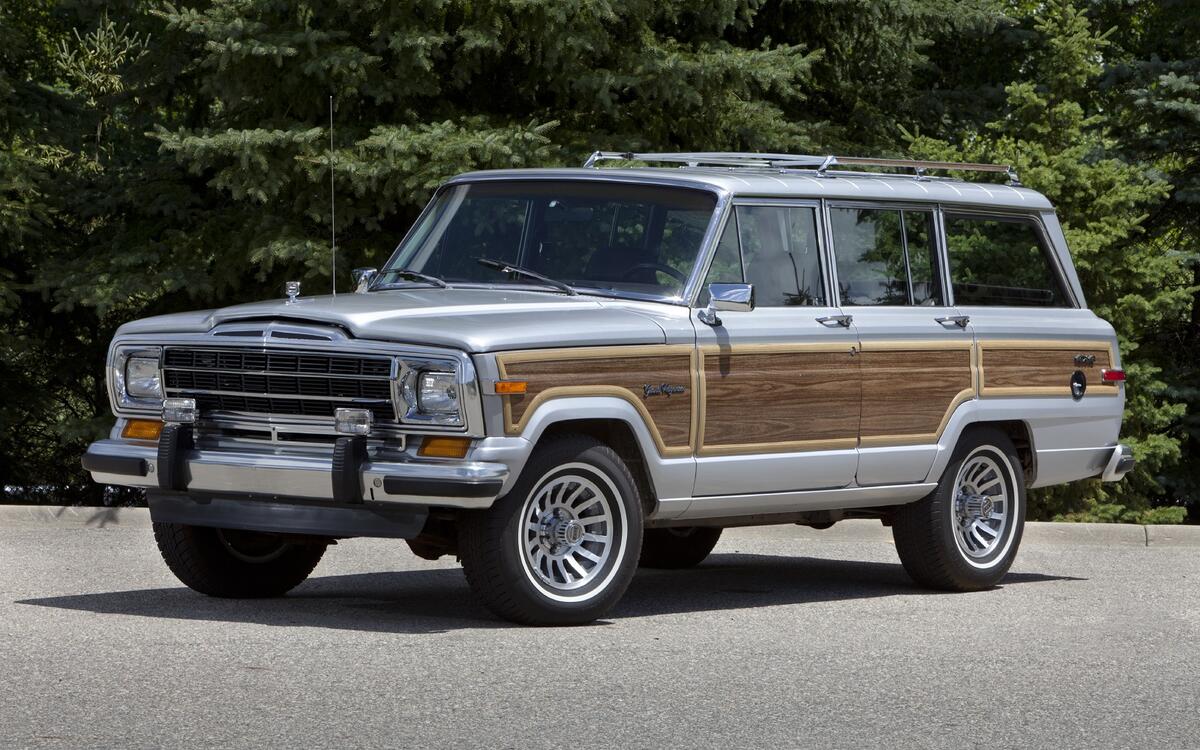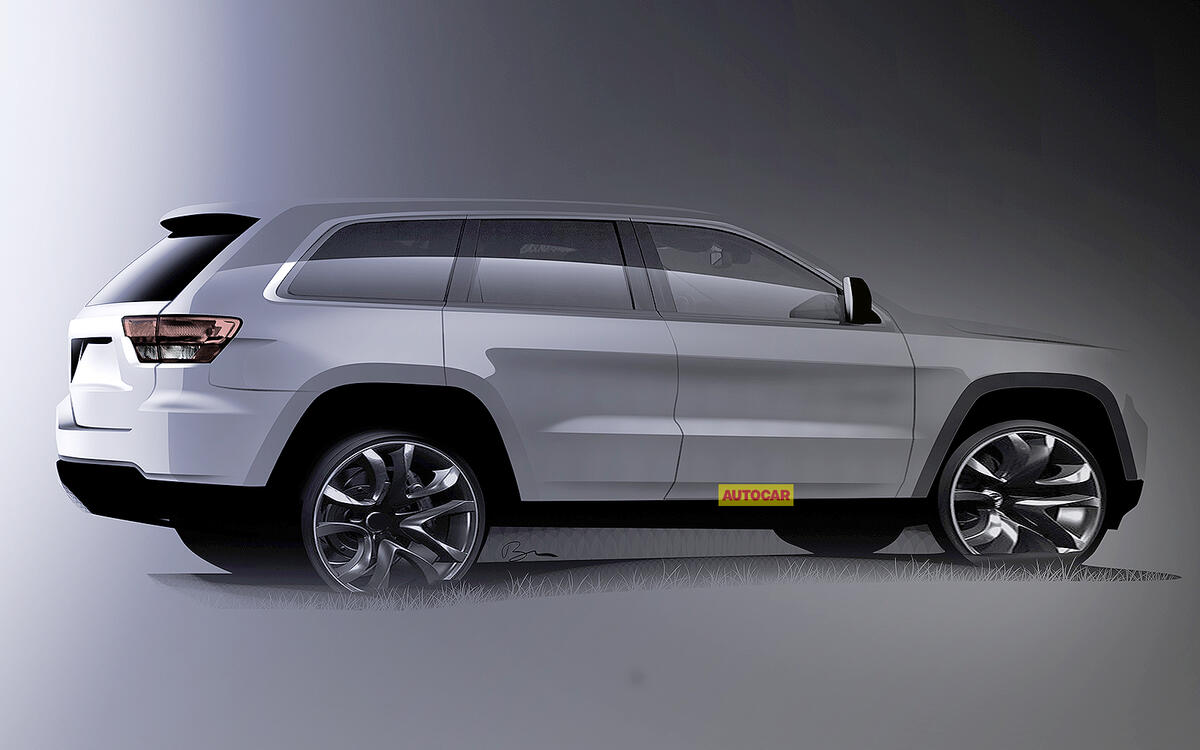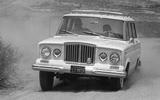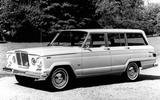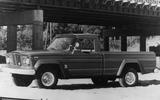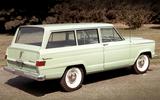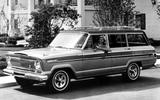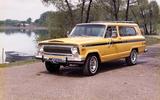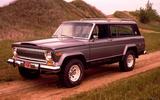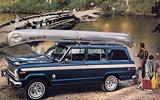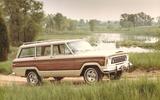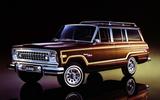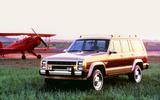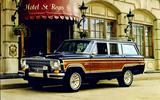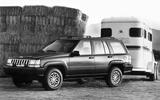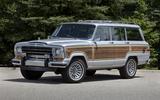 Slide of
Slide of
Jeep's next new model will resurrect one of its most emblematic nameplates.
The company confirmed it will bring back the Grand Wagoneer as a range-topping model in the early 2020s. This ultra-luxurious SUV will land in a segment dominated by the Cadillac Escalade and the Lincoln Navigator in America and Land Rover’s mighty Range Rover elsewhere. Mentioning Jeep in the same sentence as prestigious brands might sound incongruous but the firm pioneered the luxury SUV class.
While we wait for Jeep to shed light on the next Grand Wagoneer, we’re exploring how the original model moved into premium territory during a production run that stretched nearly three decades:
 Slide of
Slide of
Rugged roots (1946)
Automotive historians disagree about whether Willys kept the Station Wagon (pictured) in production for 18 years because it didn’t know how to replace it, because it couldn’t afford to design a new model or because it was happy leaving good-enough alone.
What’s certain is that this influential, all-steel off-roader often celebrated as the original SUV looked like a dinosaur by the end of the 1950s, even from its target audience’s rural vantage point. Willys knew it couldn’t keep it around for much longer.
 Slide of
Slide of
Part car, part SUV (1960s)
Willys – which Kaiser purchased in 1953 – asked designer Brooks Stevens (1911-1995) to begin working on a replacement. His involvement wasn’t surprising; he had designed the Station Wagon introduced in 1946. His task was to make the next-generation model more car-like yet still capable off-road. Engineers were given the same design brief.
All told, Willys spent approximately $20 million (about $170 million in 2020) developing the Wagoneer, a jaw-dropping sum for such a small brand.
 Slide of
Slide of
Jeep launches the Wagoneer (1962)
Jeep introduced the Wagoneer in November 1962. Presented as “all new and all Jeep,” it looked nothing like the Station Wagon it was designed to replace and it broke all visual ties with other members of the Jeep range, like the CJ. Above all, it fell perfectly in line with what executives envisioned when they started the project.
It could be driven from a hunting trip to a DIY store to a nice restaurant in the same day and it’d feel at home in all three environments. Viewed in this light, it had no true rivals.
 Slide of
Slide of
The Gladiator (1962)
The rugged Station Wagon-based truck introduced in 1947 was showing its age, too, so Jeep replaced it with a model called Gladiator built on the Wagoneer platform. The line-up included three wheelbase lengths, several payload capacities plus pickup, cab-chassis and stake body styles. Pickup buyers could choose between a Thriftside model with exposed rear wheel wells and a Townside version whose rear wheel wells were integrated into the bodywork.
 Slide of
Slide of
The original Wagoneer, by the numbers (1963)
At launch, the Wagoneer cost $2546 (about $22,000/£18,000 in 2020 money) in its most basic, two-wheel drive configuration. Adding four-wheel drive increased that figure to $3332 (roughly $28,000/£22,000 today). Jeep also offered a cheaper panel variant aimed at businesses; few were built and it’s rarely seen in 2020.
The only engine available for the 1963 model year was a 3.8-litre straight-six rated at 140bhp. It shifted through a three-speed manual transmission but an automatic was offered at an extra cost, even on four-wheel drive variants. This was a hugely important breakthrough; Jeep was the first brand to make an automatic 4x4. Another forward-thinking standout from the options list was an independent front suspension. Engineers were serious about making the Wagoneer more car-like than its predecessor.
 Slide of
Slide of
The Super Wagoneer (1966)
It took only a quick glance at Wagoneer transaction prices to figure out most buyers weren’t settling for the base variants. Jeep consequently expanded the range for the 1966 model year with a trim level called Super Wagoneer that came standard with features like four-wheel drive, bigger tires, and a 5.3-litre V8 engine rated at 250bhp.
Specific emblems let buyers tell their neighbors they had money to spare when car-shopping. Its $5943 base price ($47,000/£38,000 today) made it the most expensive Jeep available that year, it was over twice as expensive as an entry-level Wagoneer, yet it sold relatively well.
 Slide of
Slide of
The Iranian connection (1966)
Jeep started making inroads into the Iranian market in 1956, when it helped set up the Jeep Trading Company. Local CJ-5 production from complete knock-down (CKD) kits started three years later while the Wagoneer and the Gladiator were added to the range in 1966. They were called Ahoo and Simorgh, respectively, and both were marketed as rugged off-roaders rather than as luxurious chariots for the entire family. They were assembled on the outskirts of Tehran until 1981.
Manufacturing cars with American parts became a politically controversial endeavor in the wake of the 1979 Iranian revolution. The Jeep Trading Company (which General Motors invested heavily into during the 1970s) ultimately morphed into Pars Khodro in 1981 and signed licensing deals with other, non-American automakers. It notably assembled the Nissan Patrol and the Land Rover Santana for the local market. The CJ made an unexpected comeback in 1983 as the Pars Khodro Sahra; it was built with a Mitsubishi-sourced four-cylinder engine and other drivetrain parts provided by India’s Mahindra. It remained in production until 1997 but the Wagoneer and the Gladiator never returned.
 Slide of
Slide of
The Cherokee (1974)
Jeep stopped making the two-door variants of the Wagoneer after the 1968 model year. It brought the body style back with a new look and the Cherokee name for 1974 to compete against the Chevrolet Blazer and the International-Harvester Scout, among other SUVs. The range initially included a standard model and a more expensive version called Cherokee S priced at $4161 and $4724, respectively, figures that represent about $22,000 (£18,000) and $25,000 (£20,000) in 2020.
The Cherokee neatly filled the gap between the CJ-5 and the four-door Wagoneer, which slowly but surely continued moving upmarket.
 Slide of
Slide of
The Cherokee Chief (1975)
The popular Chief package released for 1975 gave the Cherokee “the tough, fighting spirit of a CJ,” according to Jeep. It added bigger tires wrapped around wider wheels, flared fenders and specific graphics, among other add-ons. It was marketed as a more off-road-friendly model than the Cherokee.
 Slide of
Slide of
The four-door Cherokee (1977)
Jeep added a four-door model to the Cherokee range in 1977 to give buyers a cheaper alternative to the Wagoneer without sacrificing practicality. The move paid off almost immediately. Jeep sold 31,308 units of the Cherokee in 1977, up from 18,895 the previous year, and 19,900 examples of the Wagoneer.
 Slide of
Slide of
Small but significant changes (1970s)
On the surface, it looked like the Wagoneer hadn’t changed much since its introduction during the 1963 model year. In reality, Jeep often made small but significant updates to keep it relatively fresh. New engines were added to the range shortly after American Motors Corporation (AMC) purchased Jeep from Kaiser in 1970.
1975 brought electronic ignition, a new power steering system and suspension tweaks; 1976 models sat on a new frame. Buyers were unlikely to notice these changes until they spent time behind the wheel, however. PICTURE: 1975 model
 Slide of
Slide of
The Wagoneer Limited (1978)
1978 brought an extra dose of poshness to the Wagoneer line-up. Marketed as “a cut above excellence,” the Limited model received woodgrain trim, leather upholstery, thicker carpet and a quieter cabin thanks to more sound-deadening material. This variant cemented the Wagoneer’s positioning as a luxury car; Jeep charged $3120 for the Limited package which bumped the total price to $10,895 (about $43,000/£34,000 in 2020). It cost as much as a four-door Cadillac Deville.
 Slide of
Slide of
The XJ-generation Wagoneer (1984)
The XJ-generation Cherokee introduced for the 1984 model year spawned an upmarket variant named Wagoneer Sport Wagon. It was only offered with four doors (buyers could select a two-door version of the Cherokee) but the range included a four- and a six-cylinder engine. It stood out from the model it was based on with quad headlights, woodgrain trim all around and additional standard features. It inevitably cost more, too.
Pricing started at $12,444 for a four-cylinder model compared to $10,295 for a comparable Cherokee. Those figures represent about $31,000/£25,000 and $25,500/£20,400 in 2020, respectively.
 Slide of
Slide of
The Grand Wagoneer (1984)
The venerable Wagoneer became the Grand Wagoneer for the 1984 model year to make space for its smaller sibling. This would be its last major update. It was over 20 years old by that point and it cost twice as much as a Cherokee yet it still sold shockingly well. In fact, it even outsold the smaller, newer and cheaper Wagoneer during every model year the two SUVs were sold concurrently except for 1985.
 Slide of
Slide of
The end of the original Grand Wagoneer (1991)
Jeep’s J-Series pickups retired after the 1987 model year but the Grand Wagoneer soldiered on through 1991. It was such a profitable model that Jeep, which joined the Chrysler group in 1987, wanted to keep it around for as long as possible. 3704 units were made for 1991 compared to 106,495 examples of the Cherokee.
The previous year’s sales totaled 6810, down from 12,345 in 1989. Sales had finally dropped to the point where keeping the Grand Wagoneer in the line-up no longer made financial sense.
 Slide of
Slide of
The final Grand Wagoneer, by the numbers (1991)
Motorists who purchased a 1991 Grand Wagoneer paid $29,695 for it, which represents about $56,000/£45,000 in 2020. The 5.9-litre, 144 HP V8 fitted with a two-barrel carburetor came standard (Chrysler chose not to upgrade the 4x4 with its fuel-injected eight) and the only option was a power sunroof.
Motorists with approximately $30,000 to spend in 1991 could have also purchased a pair of V8-powered Chevrolet Camaros (priced at $12,530), a Cadillac Brougham ($30,225) or a BMW 325iX ($31,900).
 Slide of
Slide of
Wagoneer 2000 concept (1991)
The futuristic Wagoneer 2000 introduced in 1991 stands out as one of Jeep’s most puzzling concepts. It didn’t share the slightest styling cue with the model that traced its roots to 1963. Inside, it was equipped with six individual seats plus a movable entertainment center with a VCR and a CD player.
Jeep proudly called it “a preview of what a future Grand Wagoneer might look like” but the model’s replacement, the original Grand Cherokee, was almost ready for production with proportions that were much more SUV-like. In hindsight, the Wagoneer 2000 didn’t preview much; it was merely a head-turning styling exercise unveiled to show the public the firm wasn’t sleeping on the horse.
 Slide of
Slide of
The ZJ-generation Grand Wagoneer (1993)
Jeep put the Grand Wagoneer on hiatus for the 1992 model year. Its replacement, the original Grand Cherokee, finally arrived during the 1993 model year. The line-up included a range-topping model that revived the Grand Wagoneer nameplate and lived up to it with woodgrain trim on the sides and a comprehensive list of standard features. The only options were a power-operated moon roof and fog lights. Fittingly, it was Jeep’s most expensive model; pricing started at $29,826 (about $42,000£34,000 in 2020).
Sales were lower than expected, partly because wood-like panels were increasingly frowned upon as old-fashioned. Jeep consigned the Grand Wagoneer name and its woodgrain trim to the pantheon of automotive history after 1993, leaving the Grand Cherokee Limited as the range-topping model.
 Slide of
Slide of
The Liberty Wagoneer (2000s)
The rumors of a born-again Wagoneer didn’t materialize but Jeep briefly brought the nameplate back on a dealer-installed accessory package developed for the Liberty, which was sold as the Cherokee in global markets. It added a chrome-look grille insert, running boards, woodgrain trim all around and a specific cover for the spare tire. There were also small Wagoneer emblems on both front doors.
 Slide of
Slide of
The Wagoneer in 2020
Very few mass-produced SUVs are as collectible as the Wagoneer and the Grand Wagoneer in 2020. Examples in like-new condition became shockingly sought-after during the 2010s as nostalgia-fueled enthusiast started shopping for classics. Hagerty values a 1991 example in excellent condition at $62,200 (£50,000) in America in 2020, compared to approximately $40,000 in 2018, and we’ve seen some sell for more.
There is no shortage of cheap projects waiting for a new lease on life but keep an eye out for rust, which is one of the Wagoneer’s biggest (and sometimes terminal) problems. The six- and eight-cylinder engines are straight-forward to work on and parts are readily available from a variety of vendors.
 Slide of
Slide of
What’s next? (2021 and beyond)
Jeep confirmed plans to resurrect the Wagoneer and Grand Wagoneer nameplates in the early 2020s, though it hasn’t announced either model’s exact unveiling date. Numerous leaks, insider information and a handful of official details help us paint a vague image of what the brand has in store.
Both models will share their body-on-frame architecture with the Ram 1500 pickup. They’ll be built in the same Michigan factory, too. Jeep will position the Wagoneer as an alternative to the Chevrolet Tahoe and the Ford Expedition, among others, while the Grand Wagoneer will slot at the very top of its range to rival the Cadillac Escalade, the Lincoln Navigator and Land Rover’s Range Rover. The latter model could arrive with a six-digit price tag, which would make it Jeep’s most expensive model.
It’s too early to tell whether designers will go retro but we won’t have to wait long to find out. At least one of the two SUVs is expected to make its official debut before the end of 2020. PICTURE: Autocar rendering
The Wagoneer has an interesting history in the wider story of the SUV – and the new model due later this year has big shoes to fill
Advertisement


